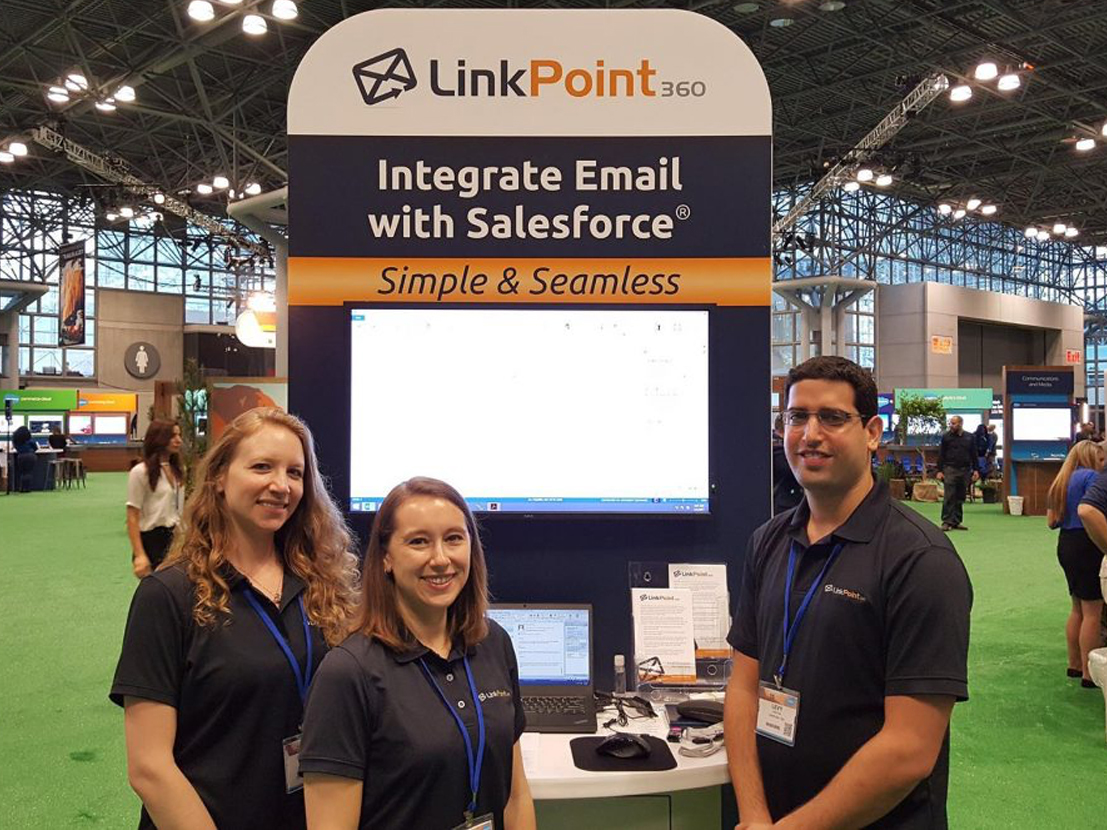
Posted in: Events, News, Productivity, Releases
It has been a busy few months here at LinkPoint360. We have been attending a number of events throughout the world showcasing LinkPoint Connect and demoing our new features to customers, prospects, partners, and attendees. We have enjoyed every event and look forward to the rest of the schedule (including Dreamforce 17).
This year, we have sponsored eight events, which have been a mix of Salesforce World Tours and local Dreamin’ events. Dreamin’ events are similar to Salesforce World Tours but on a smaller scale focusing on a specific aspect of the Salesforce community with a smaller crowd. Our team has had the opportunity to meet so many new people and current customers at the shows. Each event is unique in its own way, whether it be the type of event or even the types of people we meet. Overall, having the opportunity to build a calendar of events since the first quarter has been a fun experience.
But event planning is not all fun and games. Each event has its own set of criteria and shipping dates, from booth selection to actual location of the event. Which means that while we enjoy going to these events, we also have so much planning to do! As soon as we sign the contract and commit to the event, we start the process of printing collateral, ordering giveaways, and preparing every single item that needs to be shipped to its destination. After that comes the logistics; flights and hotels need to be booked, team members need to be prepared to demo, and marketing must put together social media posts and email promotions for the upcoming event as well as posting during the event.
After all of that comes the day of the event day (or days, depending on the type of event). Most Dreamin’ events are at least a day and a half to two days long. Salesforce World Tours are just one day. When our team arrives, they set up the booth or table, laptop, keyboard, giveaways, and collateral ready for all the attendees that will make their way around to the booth during the day. Usually the events are long days; you could be standing on your feet easily for 10-12 hours depending on some events. Don’t forget travel, too, especially if the event is local and you have to drive. Then the opportunity comes for the team to meet some new faces and demo our product and newest release features, which makes for a fun day. At the end of the show, the team takes down their materials, loads up their backpacks, and heads home without leaving anything behind.
Post show is the fun part. This is where marketing gets the opportunity to go through the leads that the team collected at the show. Lead management and routing to the Account Executives is next on the list of post-show duties. Once the leads have been thoroughly checked, they are distributed to the Account Executives for follow up and hopefully lead to closing new business. Lastly, marketing finalizes the process by sending out a post-event email to all the attendees, thanking them for taking the time to stop by the booth and check out LinkPoint360. From there, we get to do it all over again with the next planned event, which could be days, weeks, or months away.
After all is said and done, there are best practices and general goals a business needs to achieve by attending these events. First off, the unmeasurable part of the event sponsorship is the brand recognition and networking that is done while at the booth. New partners and contacts get to know your brand for the very first time when they stop by and ask the age old (very general) question: So. What do you guys do? The second part is the tangible ROI, which happens after the show when leads are counted and distributed internally for follow up. What your teams do with these new contacts has a direct impact on the monetary value of the show and answers questions like How well did we perform? Are these leads good quality? The answers to these questions help shape future events and measure ROI across the business. During this time, it is vital for teams to follow up with leads and use reliable tools, such as LinkPoint Connect, so that you can record activity and assign tasks for follow ups. Making sure you have the right tools to continue your post-event work helps determine the full ROI and how to proceed for next quarter or year. If you can’t track metrics and interactions, it becomes difficult to determine whether an event experience is truly a success and/or worth future investment. Events don’t end when the event is over; the real work begins after.



